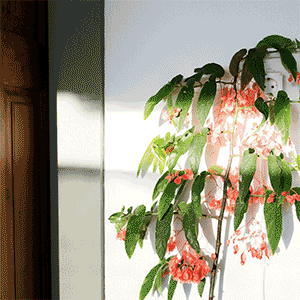Peter Ottingius
Medlem
Hittade en pdf på nätet som heter "Getting the most from your Eos-1 Class digital slr" som är skriven av Canon. Där skriver dom följande om objektiv som behöver kalibreras.
VI. EQUIPMENT CALIBRATION ISSUES
AF System Calibration
If the camera and lens are being operated correctly, but images remain consistently out of focus, there is always the possibility that the camera or lens is not performing according to factory specifications. EOS cameras and EF lenses are precision instruments, and as such they require precision adjustments to perform at peak efficiency. Although Canon makes every effort to calibrate the AF systems of EOS cameras in the manufacturing process, a small percentage of cameras require calibration adjustments at the Factory Service Center (FSC) after sale. AF system calibration at the FSC involves a series of tests to determine the positioning accuracy of mechanical components such as the image sensor and reflex mirror assemblies. Once these potential problem issues have been eliminated, test images are taken using a “tool lens” with known performance characteristics. The testing method
enables technicians to ensure that the camera is performing well within tolerances for AF accuracy. Once this has been done with the tool lens, it becomes possible to check the performance of other lenses the customer may have.
Lens Calibration
Because each autofocus lens contains its own microcomputer and many other internal devices such as focusing motors and diaphragm actuators, lenses occasionally require calibration. If a focusing error is detected, the circuitry of the lens itself can be adjusted to ensure that it is operating according to design specs. Calibrating a lens does not compromise its performance with other camera bodies because the calibration standards for the lens are independent from the calibration standards for the body. Please keep in mind that we do not recommend sending equipment to the Factory Service Center unless you are sure that the source of your image quality problems is not one of the issues we have already discussed in this document.
Testing Your Own Cameras & Lenses
Although photographers in the field cannot duplicate the testing capabilities of a Canon Factory Service Center, it is certainly possible to test cameras and lenses at home or in a studio to check their performance. The following procedure may help you determine whether your camera equipment is in need of calibration.
1. Perform your focusing test at a reasonable light level (office lighting or brighter) to ensure optimum results.
2. Place the camera on a sturdy tripod and use a remote switch when firing the shutter. For maximum quality, consider the use of mirror lock. (C.Fn 12 on EOS-1 class Digital SLRs.) If you are using an IS Lens, turn off the Image Stabilizer.
3. Select a focusing target with adequate detail from center to edge. A newspaper page is a good choice.
4. Make sure that the target is totally flat and as parallel as possible to the camera.
5. Set the camera to One-Shot AF and manually select the center focusing point.
6. Compose the picture so that the test target fills the frame from edge to edge.
7. For each of your lenses, make one exposure at the maximum aperture of the lens and another at f/8, varying the shutter speed if necessary to adjust the exposure level indicated by the histogram on the camera’s LCD monitor. Evaluation
Method A:
Use EOS Capture or RemoteCapture software to analyze your images as soon as they have been transferred to your computer. RemoteCapture has
100% magnification viewing option. (If you are using EOS Capture, you can use EOS Viewer Utility or Digital Photo Professional to enlarge the images.)
Evaluation Method B:
Open the images in your computer and make two copies of them: one “as is” and another with a liberal amount of unsharp mask applied. Here are somerecommended settings: Amount, 300%; Radius, 0.3 pixels; Threshold 0 pixels. Make letter-size prints on a high-quality inkjet printer using photo paper and photo ink. Compare the results. If the camera has a consistent focusing problem with several different lenses, then it’s reasonable to assume the camera needs an adjustment. If you are getting sharp results from most lenses but not all, then it’s reasonable to assume that the lens in question may need an adjustment.
VI. EQUIPMENT CALIBRATION ISSUES
AF System Calibration
If the camera and lens are being operated correctly, but images remain consistently out of focus, there is always the possibility that the camera or lens is not performing according to factory specifications. EOS cameras and EF lenses are precision instruments, and as such they require precision adjustments to perform at peak efficiency. Although Canon makes every effort to calibrate the AF systems of EOS cameras in the manufacturing process, a small percentage of cameras require calibration adjustments at the Factory Service Center (FSC) after sale. AF system calibration at the FSC involves a series of tests to determine the positioning accuracy of mechanical components such as the image sensor and reflex mirror assemblies. Once these potential problem issues have been eliminated, test images are taken using a “tool lens” with known performance characteristics. The testing method
enables technicians to ensure that the camera is performing well within tolerances for AF accuracy. Once this has been done with the tool lens, it becomes possible to check the performance of other lenses the customer may have.
Lens Calibration
Because each autofocus lens contains its own microcomputer and many other internal devices such as focusing motors and diaphragm actuators, lenses occasionally require calibration. If a focusing error is detected, the circuitry of the lens itself can be adjusted to ensure that it is operating according to design specs. Calibrating a lens does not compromise its performance with other camera bodies because the calibration standards for the lens are independent from the calibration standards for the body. Please keep in mind that we do not recommend sending equipment to the Factory Service Center unless you are sure that the source of your image quality problems is not one of the issues we have already discussed in this document.
Testing Your Own Cameras & Lenses
Although photographers in the field cannot duplicate the testing capabilities of a Canon Factory Service Center, it is certainly possible to test cameras and lenses at home or in a studio to check their performance. The following procedure may help you determine whether your camera equipment is in need of calibration.
1. Perform your focusing test at a reasonable light level (office lighting or brighter) to ensure optimum results.
2. Place the camera on a sturdy tripod and use a remote switch when firing the shutter. For maximum quality, consider the use of mirror lock. (C.Fn 12 on EOS-1 class Digital SLRs.) If you are using an IS Lens, turn off the Image Stabilizer.
3. Select a focusing target with adequate detail from center to edge. A newspaper page is a good choice.
4. Make sure that the target is totally flat and as parallel as possible to the camera.
5. Set the camera to One-Shot AF and manually select the center focusing point.
6. Compose the picture so that the test target fills the frame from edge to edge.
7. For each of your lenses, make one exposure at the maximum aperture of the lens and another at f/8, varying the shutter speed if necessary to adjust the exposure level indicated by the histogram on the camera’s LCD monitor. Evaluation
Method A:
Use EOS Capture or RemoteCapture software to analyze your images as soon as they have been transferred to your computer. RemoteCapture has
100% magnification viewing option. (If you are using EOS Capture, you can use EOS Viewer Utility or Digital Photo Professional to enlarge the images.)
Evaluation Method B:
Open the images in your computer and make two copies of them: one “as is” and another with a liberal amount of unsharp mask applied. Here are somerecommended settings: Amount, 300%; Radius, 0.3 pixels; Threshold 0 pixels. Make letter-size prints on a high-quality inkjet printer using photo paper and photo ink. Compare the results. If the camera has a consistent focusing problem with several different lenses, then it’s reasonable to assume the camera needs an adjustment. If you are getting sharp results from most lenses but not all, then it’s reasonable to assume that the lens in question may need an adjustment.








